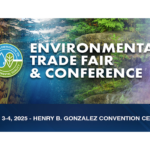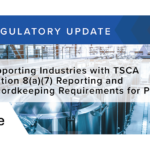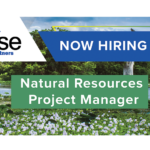
Phase 1 Environmental Site Assessments (ESAs) play a crucial role in evaluating potential environmental risks associated with a property. In Victoria, these assessments are conducted to identify any past or current activities that may have caused contamination to the site. By understanding the purpose, process, and challenges of Phase 1 ESAs, property owners and developers can make informed decisions regarding land use and environmental management.
Understanding Phase 1 Environmental Site Assessments
In order to fully comprehend the significance of Phase 1 ESAs, it is essential to understand their purpose and importance. These assessments are conducted to evaluate the likelihood of environmental contamination on a site, particularly when it comes to hazardous substances or pollutants. The results of a Phase 1 ESA provide valuable information to stakeholders, including property owners, buyers, financial institutions, and regulatory authorities.
Purpose and Importance of Phase 1 Assessments
Phase 1 ESAs serve multiple purposes, but their primary goal is to assess the historical and current environmental conditions of a property. They aim to identify potential risks associated with contamination and provide recommendations for further investigations or remediation, if necessary. These assessments are critical for several reasons:
- Property Transactions: Phase 1 ESA reports are often required during property transactions to ensure buyers are aware of any environmental liabilities associated with a site. This helps inform business decisions and negotiate appropriate terms for the transaction.
- Regulatory Compliance: Phase 1 ESAs are crucial for complying with environmental regulations and standards. By conducting these assessments, property owners can demonstrate their commitment to environmental responsibility and fulfill legal obligations.
- Risk Management: Assessing potential environmental risks allows property owners to mitigate liabilities and avoid future costs associated with clean-up and legal claims. Phase 1 ESAs help in developing risk management strategies and preventing unforeseen environmental issues.
Key Components of Phase 1 Assessments
A comprehensive Phase 1 ESA typically consists of several key components. These include:
- Site Visit and Inspection: A qualified environmental consultant visits the property to conduct a detailed visual inspection. This involves examining the site, its surroundings, and any potential sources of contamination such as storage tanks or chemical spills.
- Historical Research: Extensive research is performed to gather information about the site’s past activities and land use. This includes reviewing historical records, aerial photographs, and interviews with current and former owners or occupants.
- Neighboring Property Evaluation: The assessment also considers nearby properties to identify potential sources of contamination that may have impacted the subject site. This involves reviewing historical records and conducting interviews with neighboring property owners.
During the site visit and inspection, the environmental consultant meticulously examines the property, paying close attention to any signs of contamination or potential environmental hazards. They assess the condition of buildings, infrastructure, and any existing environmental controls. This thorough examination helps in identifying any immediate risks or potential areas of concern.
Historical research is a crucial aspect of Phase 1 assessments, as it provides valuable insights into the past activities and land use of the property. The environmental consultant delves into archives, reviewing historical records, maps, and aerial photographs to gather information about previous operations, potential spills, or hazardous material storage. They may also conduct interviews with current and former owners or occupants to gain a deeper understanding of the property’s history.
Neighboring property evaluation is an integral part of Phase 1 assessments, as contamination from adjacent sites can migrate and impact the subject property. The environmental consultant investigates nearby properties, reviewing their historical records and conducting interviews with neighboring property owners. This helps in identifying potential sources of contamination and understanding the overall environmental context of the area.
The Process of Conducting Phase 1 Assessments in Victoria
When conducting Phase 1 Assessments in Victoria, a standardized process is followed. This ensures consistency and accuracy in evaluating environmental risks associated with a property.
Initial Site Inspection
The first step in a Phase 1 Assessment is an on-site inspection by an experienced environmental consultant. During this visit, the consultant thoroughly examines the property, documenting any visible signs of environmental contamination or potential risks. This visual inspection provides the consultant with critical information about the site’s current condition.
Historical Review of the Site
A comprehensive historical review is an integral part of the Phase 1 Assessment process. This involves examining historical records, including aerial photographs, fire insurance maps, and land title documents. Gathering information about the property’s past uses, occupants, and activities helps identify any potential sources of contamination.
Evaluation of Surrounding Properties
Assessing the surrounding properties is crucial to understanding the potential risks that may have impacted the subject site. The Phase 1 Assessment includes a review of historical records, site inspections, and interviews with neighboring property owners to identify potential sources of contamination.
Regulatory Framework for Phase 1 Assessments in Victoria
The regulatory framework governing Phase 1 Assessments in Victoria ensures that these assessments adhere to established environmental legislation and compliance requirements. Property owners and developers must be familiar with these regulations to ensure their assessments are conducted effectively.
Relevant Environmental Legislation
Various environmental legislation and regulations are pertinent to Phase 1 Assessments in Victoria. These include the Environmental Management Act, the Contaminated Sites Regulation, and the Ministry of Environment guidance documents. Compliance with these laws is essential for conducting thorough and legally sound assessments.
Compliance Requirements
In addition to the specific legislation, Phase 1 Assessments must adhere to compliance requirements set by regulatory authorities such as the Ministry of Environment. This includes following standardized assessment methodologies, reporting formats, and submission timelines. Adherence to these requirements ensures consistency and transparency in the assessment process.
Interpreting Phase 1 Assessment Reports
Once the Phase 1 Assessment is completed, the final report presents a comprehensive overview of the findings. Interpreting these reports is crucial for property owners and stakeholders to understand the potential environmental risks associated with the property.
Identifying Potential Environmental Risks
The Phase 1 Assessment report identifies potential environmental risks by detailing any recognized environmental conditions (RECs) or potential sources of contamination identified during the assessment process. This allows property owners to assess the level of risk associated with the property and take appropriate measures to mitigate these risks.
Recommendations and Next Steps
Based on the findings of the Phase 1 Assessment, the report typically includes recommendations for further actions or assessments that may be required. These recommendations help property owners make informed decisions regarding the site’s suitability for their intended use and develop a plan for addressing any identified risks or liabilities.
Challenges and Solutions in Phase 1 Environmental Site Assessments
Conducting Phase 1 Environmental Site Assessments in Victoria can present various challenges. However, with proper strategies and approaches, these challenges can be effectively overcome.
Common Obstacles in Conducting Assessments
One common challenge in Phase 1 Assessments is the availability and accessibility of historical records. Obtaining accurate information about a property’s past uses and potential contamination sources can be time-consuming and challenging. Another challenge is the identification and evaluation of potential risks associated with neighboring properties.
Effective Strategies for Comprehensive Assessments
To address these challenges, establishing strong relationships with local authorities and experts in the field can help in obtaining accurate historical records and accessing relevant information. Collaboration with neighboring property owners can provide additional insights into potential sources of contamination. Employing experienced environmental consultants with a thorough understanding of local regulations and assessment methodologies ensures comprehensive and accurate Phase 1 Assessments.
In conclusion, Phase 1 Environmental Site Assessments are critical for evaluating potential environmental risks associated with properties in Victoria. By understanding the purpose, process, and challenges of these assessments, property owners and developers can make informed decisions regarding land use and mitigate risks associated with contamination. Adhering to the regulatory framework, interpreting assessment reports, and employing effective strategies further enhance the efficacy of Phase 1 Assessments and facilitate responsible environmental management.
Understanding the complexities and challenges of Phase 1 Environmental Site Assessments in Victoria is just the beginning. If you’re ready to take the next step in ensuring your property is compliant, secure, and environmentally sound, ESE Partners is here to guide you. Our team of expert environmental engineers and scientists specialize in delivering comprehensive assessments and innovative solutions tailored to your unique needs. With a commitment to improving community quality of life and a promise to recognize and deliver opportunity, we’re dedicated to moving your business forward responsibly. Don’t wait to address potential environmental risks—Request A Proposal today and partner with a firm that values honest, quality-driven results.








